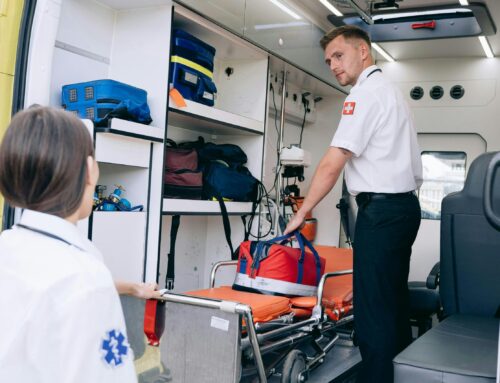Laboratory testing accounts for 60-70% of the medical decision making in a healthcare facility. Although an extremely critical factor, the pre-analytical phase of lab testing is the most problematic process and represents up to 70 percent of errors.
With so much weighing on a simple test, it is essential that they are free of any manipulation. In this blog, we will identify potential pre-analytical variables in DNA sample testing and ways to prevent them.
The pre-analytical phase includes sample collection, transportation and storage, among other steps taken prior to testing in the lab. A large contributor to errors is hemolysis which can happen due to poor sampling techniques and issues that occur during transportation from the draw site to the testing instrument.
Hemolysis is the breakdown of red blood cells, that can affect laboratory results. If red blood cells burst during specimen collection, the blood being tested is not the same as the blood circulating in the patient. Red blood cells contain 23 times as much potassium as the liquid portion of the blood, so when they rupture, the sample is spiked with so much potassium, it could result in a physician prescribing extremely drastic treatment for a patient.
So, how can hemolysis and other degradation of samples be avoided in the pre-analytic phase?
According to the Iranian Journal of Pathology (2021), the following steps should be taken for both collection and handling and packaging and transportation:
Collection and Handling
- “Choose the right gauge needle” (Anvari et al., 2021).
- Allow cleaning alcohol used for cleansing the venipuncture to completely dry before drawing blood.
- Use the correct collection tube (serum separator tube (SST), (tiger top tubes) or red top tubes without anticoagulants).
- “After performing venipuncture and removing the needle, transfer the blood gently down the side of the collection tube” (Anvari et al., 2021).
- “Invert the tube gently as recommended by the tube manufacturer” (Anvari et al., 2021).
- “Following, place the tube upright for 15-30 minutes at room temperature until complete clot formation” (Anvari et al., 2021).
- “Once clotted, store the samples at an upright position at 4°C (refrigerated) until ready to be shipped to the lab or spun down and serum poured off into a clean labeled sterile tube prior to sending. Avoid freeze-thaw cycles” (Anvari et al., 2021). Multiple freeze and thaw cycles can have detrimental effects on the concentration of all analytes, breaking down the DNA. One must ensure proper packaging and refrigeration during transport.
Packaging for the shipment
- Proper packaging should be in sufficient cases with compartments to avoid cross-contamination that are leak-proof and have indestructible outer packaging.
- Ship the samples in pathology bags with a phase change material (PCM) cold pack and in an insulated container for overnight delivery. Different samples may require different temperature variations, which is why a PCM is our recommend coolant. Phase Change Material (PCM) is capable of storing and releasing large amounts of energy, allowing it to maintain a temperature within a specific range. PCMs can reliably achieve and maintain 0°C (32°F) Refrigerated, -7°C (19.4°F) Frozen, -16°C (3.2°F) Frozen, and -21°C (-5.8°F) Ultra-cold, depending on the applications or need. (Anvari et al., 2021)
Iranian Journal of Pathology (2021) suggests the following temperature ranges for whole blood, serum and plasma.
Whole Blood
Before DNA extraction, whole blood can be stored at room temperature for no more than 24 hours or in the refrigerator at 2 to 8°C for 72 hours. After this time, genomic DNA (gDNA) undergoes remarkable degradation. If a delay longer than this is inevitable, the erythrocytes should be removed and the specimen should be frozen at -20ᵒC or -70ᵒC (Anvari et al., 2021).
If RNA extraction is not possible in this period, the samples should be frozen after removing erythrocytes. Setting up cold chain transportation or quick addition of RNase inhibitors should be established as an important pre-analytic step for RNA assays. In conclusion, RNA and gene transcription studies should only be performed on samples that are properly collected and stored in RNA stabilizer solutions (Anvari et al., 2021).
Plasma
Like whole blood, it is recommended to ship the plasma at 2°C to 8°C. However, plasma can be kept for up to 5 days in these conditions. For longer durations, it should be stored at -20°C or lower (Anvari et al., 2021).
Serum
“Serum should be shipped frozen on dry ice and stored at −20°C prior to DNA or RNA studies (Anvari et al., 2021).
Thermal Custom Packaging PCM’s are specially designed with formulas to form a highly regular geometric structure when frozen, which is the basis of the large potential for heat energy storage. The specific ingredients of each formula pinpoint the temperature at which the phase change will occur. The non-hazardous solutions were also developed to cycle through the freeze/thaw phase change thousands of times without degradation of materials. Many substances can effectively act as a PCM, however, it requires extensive knowledge and research to develop a combination that allows them to maintain a constant exact temperature in the refrigerated or frozen range that is desired. Learn more about Thermal Custom Packaging’s specialized insulated transport totes and PCMs here: https://www.thermalcustompackaging.com/
Anvari, M., Gharib, A., Abolhasani, M., Azari-Yaam, A., Gharalari, F., Safavi, M., Zare-Mirzaie, A., & Vasei, M. (2021). Pre-analytical practices in the molecular diagnostic tests, A concise review. Iranian Journal of Pathology, 16(1), 1–19. https://doi.org/10.30699/ijp.2020.124315.2357



